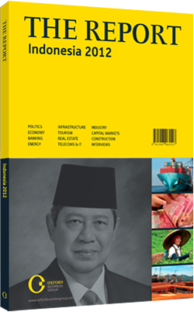The day’s catch: Aiming to become the world’s largest fisheries producer
As an archipelago consisting of around17,500 islands and with a coastline of some 81,000 km, Indonesia is uniquely endowed in its access to aquatic natural resources. The Indonesian fisheries industry produced a total of 10.85m tonnes in 2010, up from 9.82m tonnes in 2009 according to data from the Ministry of Marine Affairs and Fisheries (MMAF). This translated into export revenues of $2.66bn, up 8.05% over the $2.46bn recorded in 2009. The MMAF set a 2011 fisheries production target of 12.26m tonnes, (a 13% increase over 2010) as well as a 22.49m-tonne goal for 2014.
This growth is expected to come largely from controlled fisheries rather than conventional catchment practices. After overtaking the US as the world’s third-largest producer of fisheries products in 2007, Indonesia has set its sights on holding the number one spot by 2015. The MMAF is charting growth from the 6.85m tonnes expected for 2011 to 16.86m tonnes by 2014.
ADVANTAGEOUS ACCESS: While this goal is ambitious, the country does have the advantage of access to six of the 64 large marine ecosystems (LMEs) identified worldwide by the UN Environmental Programme. LMEs are characterised as having high levels of fertility and productivity. The LMEs directly accessible to the Indonesian fisheries sector are Bengala Bay, the South China Sea, the Sulu-Celebes Sea, the Indonesian Sea, the Arafura-Carpentaria Gulf and the Northern Australia Sea. In total, the country boasts a potentially exploitable aquaculture development area of 7.23m ha, consisting of 3.78m ha of mariculture (52.2%), 1.23m ha of brackish water aquaculture (16.9%) and 2.23m ha of freshwater aquaculture (30.9%).
GOVERNMENT PLANS: In order to capitalise on this naturally occurring bounty, the government has instituted a number of schemes to increase production. The prominence of fisheries is exemplified by its inclusion in three of the country’s six economic development corridors as outlined in the Master Plan for the Acceleration and Expansion of Indonesia’s Economic Development through 2025 (MP3EI). Under the plan a total of Rp42trn ($5.04bn) is to be invested in fisheries, spurring development in the Java, Sulawesi and Papua economic corridors by 2025. These investments project growth of combined catch fisheries and aquaculture from the 2009 level of 10.06m tonnes to 27.32m tonnes by 2015.
Although the industry is heavily dependant on growth from within the country, foreign direct investment into the fisheries sector increased to $18m in 2010, up 71.7% over the $5.1m recorded in 2009.
The sector is overseen by the MMAF, which was created in 2001 after being previously incorporated among the Ministries of Agriculture, Environment and Industry. Its primary responsibilities include strengthening marine and fisheries human resources, managing fisheries and marine resources in a sustainable manner, increasing scientific-based productivity and competitiveness, and extending access to both the domestic and the international market.
DELICATE BALANCE: While boosting seafood production is a high priority for the government in terms of both increasing domestic food stocks as well as generating export revenue, the MMAF is also engaged in substantial marine conservation programmes.
“Indonesia has been declared a marine mega biodiversity region, meaning we are running conservation programmes in conjunction with non-governmental organisations and global organisations such as the US National Oceanic and Atmospheric Administration,”
Fadel Muhammad, former minister of maritime affairs and fisheries, told OBG. “We are working on climate change schemes with international partners, weather forecasting methods and warning systems for our fishing grounds, tsunami warning systems and aquaculture.”
As of 2010, MMAF efforts had amassed a total marine conservation area encompassing 13.9m ha, and was targeting another 1.6m ha by 2014. The final target for these protected waters is 20m ha by 2020. Costs to maintain the conservation areas range from $7.5 per ha for larger contiguous blocks (in excess of 1m ha) to $110 per ha for those that measure less than 20,000 ha.
You have reached the limit of premium articles you can view for free.
Choose from the options below to purchase print or digital editions of our Reports. You can also purchase a website subscription giving you unlimited access to all of our Reports online for 12 months.
If you have already purchased this Report or have a website subscription, please login to continue.

